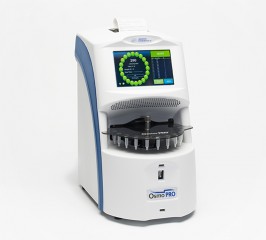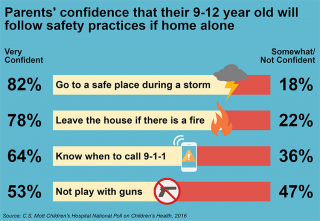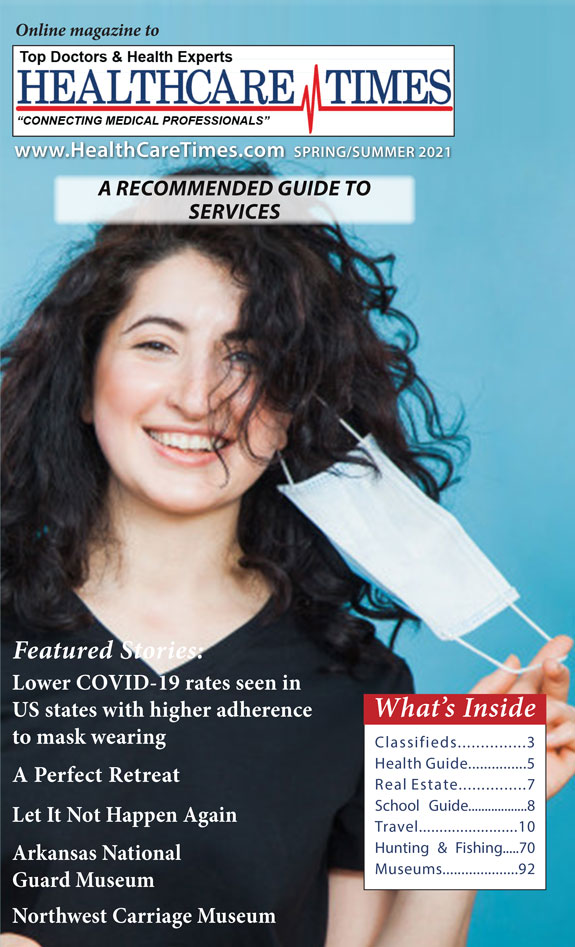News
Newswise —
The number of women living to age 90 in the United States has increased significantly in the past century. Currently estimated at 1.3 million, this demographic is expected to quadruple by 2050. A new study by researchers at University of California San Diego School of Medicine found that women who start menstruation and experience menopause later in life may have increased chances of surviving nine decades.
The study, published online July 27, 2016 in Menopause, is the first to evaluate the association of reproductive factors with survival to a specific advanced age, such as 90 years old.
“Achieving longevity is an overarching public health goal with so many of us asking ‘how do I live longer?’ Our study found that women who started menstruation at age 12 or older, experienced menopause, either naturally or surgically, at age 50 or older and had more than 40 reproductive years had increased odds of living to 90-years-old,” said Aladdin Shadyab, PhD, with the Department of Family Medicine and Public Health at UC San Diego School of Medicine.
Of the approximately 16,000 participants in the racially and ethnically diverse group, 55 percent survived to age 90. The participants were from the Women’s Health Initiative (WHI), a national longitudinal investigation of postmenopausal women, and were followed for 21 years.
“Our team found that women who started menstruation at a later age were less likely to have certain health issues, like coronary heart disease, and those who experienced menopause later in life were more likely to be in excellent health overall, which may be a possible explanation for our findings,” said Shadyab.
Women who started menstruation and experienced menopause at a later age were also less likely to be smokers or have a history of diabetes.
“Factors, such as smoking, can damage the cardiovascular system and ovaries, which can result in earlier menopause. Women with later menopause and a longer reproductive lifespan may have decreased risk of cardiovascular diseases,” said Shadyab.
Shadyab, whose grandfather lived to age 102-years-old and sparked his passion for studying aging, said more studies are needed to examine how lifestyle, genetics and environmental factors may explain the link between reproductive lifespan and longevity.
“This study is just the beginning of looking at factors that can predict a woman’s likelihood of surviving to advanced age,” said Shadyab. “Using my grandfather as inspiration, I am excited to take these results and continue to contribute to the science behind longevity.”
Study co-authors include: Sonia Jain, Andrea LaCroix, UC San Diego; Caroline Macera, Richard Shaffer, Linda Gallo, San Diego State University; Margery Gass, The North American Menopause Society; Molly Waring, University of Massachusetts Medical School; Marcia Stefanick, Stanford University School of Medicine.
Funding for this research came, in part, from the National Institutes of Health (HHSN268201100046C, HHSN268201100001C, HHSN268201100002C, HHSN268201100003C, HHSN268201100004C, HHSN271201100004C).
###
Newswise — Norwood, MA –
Advanced Instruments, the world’s leading authority in osmometry, will preview their new OsmoPRO multi sample osmometer at the 68th AACC Annual Scientific Meeting & Clinical Lab Expo in Philadelphia on August 2-4. OsmoPRO is a 20-position micro sample osmometer designed specifically to address the changing needs of today’s busy laboratories to improve efficiency and reduce sample turn-around time.
Ideal for sample-limited applications, OsmoPRO use a small 20 μL sample size. Samples can be analyzed one at a time, or batch processed depending on the workflow demands. OsmoPRO® uses the industry preferred freezing point depression method to deliver results in just 2 minutes.
A versatile piece of laboratory equipment for any laboratory setting, OsmoPRO is able to analyze a variety of complex aqueous mixtures including blood, serum, plasma, urine, cell culture media, drug formulations, and biological cell therapies. Time saving features, like the ability to run tests unattended, automated processing of up to 20 samples, and the intuitive touchscreen, were designed to enable laboratory professionals the ability to manage their time effectively.
“The OsmoPRO was designed with a set of usability, connectivity, and software control features consistent with the demands of today’s overworked, highly regulated laboratories,” said Kelly Peterson, Product Manager.
The integrated 2-D barcode scanner provides positive sample identification to reduce transcription errors. Data management and transfer can be handled via the on-board printer or by easily exporting the data using the Ethernet connection and multiple USB ports.
“OsmoPRO incorporates more than 60 years of applied technology and expertise from Advanced Instruments, the industry leader in the field of osmometry,” said Peter Costas, Vice President Sales & Marketing. “OsmoPRO replaces the Advanced Model 2020 osmometer, which has been an extremely popular and reliable osmometer used in thousands of laboratories worldwide, and represents Advanced Instruments commitment to quality and innovation in the field of osmometry”.
OsmoPRO can be used in a variety of laboratory applications including clinical diagnostics, formulation development, bioprocess monitoring and process control, industrial, environmental, and finished product quality control.
For more information about the OsmoPRO osmometer, please visit aicompanies.com/OsmoPRO
About Advanced Instruments Advanced Instruments, Inc. is a leading supplier of instrumenta¬tion for clinical, pharmaceutical, biotechnology, microbiology and food laboratories around the world. Quality, reliability, service and support have been the company’s guiding principles since our founding in 1955. Our innovative application of technology helps healthcare organizations improve the quality of care and industrial companies enhance quality and productivity. For more information, please visit aicompanies.com.
Newswise — TORONTO –
An FDA approved drug to treat renal cell carcinoma appears to reduce levels of a toxic brain protein linked to dementia in Alzheimer’s and Parkinson’s diseases when given to animals. This finding is the latest from Georgetown University Medical Center’s Translational Neurotherapeutics Program (TNP) examining tyrosine kinase inhibitors in the treatment of neurodegenerative diseases.
The study, to be presented at the annual Alzheimer’s Association International Conference in Toronto, found that the drug pazopanib decreases levels of phosphorylated Tau (p-Tau) in animal models genetically engineered to produce human mutant tau throughout their brains.
The TNP lab previously demonstrated in animal models that tau is a critical part of the “garbage disposal system,” in cells allowing them to clear accumulated toxic proteins. In humans, p-Tau describes tau that has been abnormally modified, leaving it unable to do its job.
“Our lab has shown that functional tau is required for the clearance of amyloid beta, which accumulates in sticky clumps called plaques. If tau stops functioning, the amyloid beta accumulation leads to cell death,” explains Monica Javidnia, a pharmacology doctoral candidate at GUMC. “When tau is abnormally modified, it accumulates within neurons forming sticky tangles, and the when the cell dies, it and the amyloid beta spill out into the brain. These are the plaques and tangles that are the hallmark of Alzheimer’s disease.” P-tau is also involved in other neurodegenerative diseases.
Previous research from the TNP has shown that when tyrosine kinases are inhibited, the garbage disposal system begins working, allowing cells to once again clear toxic proteins. Pazopanib is a known tyrosine kinase inhibitor.
The TNP, led by Charbel Moussa, MD, PhD, has identified several tyrosine kinases, which appear to play a role in neurodegeneration, protein clearance and inflammation. This work has led to clinical trials with the cancer drug nilotinib in both Parkinson’s and Alzheimer’s disease set to begin this summer. (Moussa is listed as an inventor on a patent application that Georgetown University filed related to nilotinib and the use of other tyrosine kinase inhibitors for the treatment of neurodegenerative diseases.)
As Javidnia explains, there are two schools of thought in the Alzheimer's field as to the main culprit of the disease — tau or amyloid beta.
“Work from our lab and other groups shows tau pathology preceding amyloid beta. We believe tau is mainly responsible for dementia and exacerbates A-beta pathology,” she says. “However, we are also studying the effects of pazopanib on amyloid beta to create a better understanding of how it works and what diseases it could potentially be used to treat.”
Javidnia says analysis in this study shows pazopanib penetrates the mice’s blood-brain barrier when given the equivalent of half of dose given for renal cell carcinoma treatment. Following treatment, the animal models showed significant decreases in levels of phosphorylated tau.
“In addition, the drug was safe and well-tolerated,” Javidnia says. “Our next work will focus on the individual receptors pazopanib targets to better understand their role in protein clearance and inflammation.”
Javidnia’s co-authors include Moussa, Michaeline Hebron and Hannah J Brown from the TNP.
About Georgetown University Medical CenterGeorgetown University Medical Center (GUMC) is an internationally recognized academic medical center with a three-part mission of research, teaching and patient care (through MedStar Health). GUMC’s mission is carried out with a strong emphasis on public service and a dedication to the Catholic, Jesuit principle of cura personalis -- or "care of the whole person." The Medical Center includes the School of Medicine and the School of Nursing & Health Studies, both nationally ranked; Georgetown Lombardi Comprehensive Cancer Center, designated as a comprehensive cancer center by the National Cancer Institute; and the Biomedical Graduate Research Organization, which accounts for the majority of externally funded research at GUMC including a Clinical and Translational Science Award from the National Institutes of Health. Connect with GUMC on Facebook (Facebook.com/GUMCUpdate), Twitter (@gumedcenter) and Instagram (@gumedcenter).
Newswise — ANN ARBOR, Mich. —
Parents are more confident their pre-teen child would know what to do if there were a house fire or tornado than whether the child would avoid playing with guns if home alone, a new national poll says.
Four out of five parents of kids age 9 to 12 say they are very confident their child would appropriately handle an emergency like a storm (82 percent), or a fire (78 percent). Sixty-four percent of parents are confident their child would know when to call 911.
However, fewer parents (53 percent) are very confident their tween would not play with guns when adults weren’t home, according to a new report from the C.S. Mott Children’s Hospital National Poll on Children’s Health.
“Many parents struggle deciding if their child is responsible enough to be left home alone, especially as their child moves into the tween years. This is an especially important decision during the summer when many parents have to make arrangements for kids who are out of school,” says Sarah J. Clark, MPH, director of the C.S. Mott Children’s Hospital National Poll on Children’s Health.
“Our poll found that while parents are confident that their children would know what to do if faced with emergencies like a fire or storm, they expressed a great deal of hesitancy about gun safety. Nearly half are not confident their tween would not play with guns encountered at a home with no adult supervision.”
Mothers and fathers report the same level of confidence about their tweens’ likely safety practices, and have similar confidence levels for sons and daughters. This indicates that a broad spectrum of parents are aware of the potential for accidental gun injuries, the Mott poll report notes. And with 1 in 3 U.S. households having at least one gun, it is not unlikely that unsupervised tweens could encounter one at home or in a friend or relative’s home. Gun safety at homeAccording to a 2010 Mott poll, more than half of parents who did not own a gun never discussed firearm safety with their children age 5 to 17. One in four parents who owned a gun was very worried that their children could get hurt with a gun when at a friend’s home.
Yet, staying home alone is a routine occurrence for 13 percent of tweens, according to this month’s Mott report. Nine percent of younger tweens (ages 9 and 10) and 19 percent of older tweens (ages 11 and 12) stay home alone for at least two hours every week.
Unsupervised time increases in the summer when children are out of school. Parents report that summer plans for tweens include 24 percent staying home alone or with siblings, and another 11 percent staying with a babysitter or adult relative, on a regular basis.
The poll was conducted in May and included a nationally representative sample of parents with at least one child age 9 to 12.
“There is no single ‘right age’ when a child is ready to stay home alone,” Clark says. “Children at the tween age of 9-12 years may feel ready to stay home alone, but not all will be able to handle the different situations that may arise. Parents making this decision should consider the maturity of the child, sibling ages, neighborhood safety and how close they are to friends or relatives who could step in to help if needed. Parents should make sure tweens are responsible and knowledgeable about safety practices in case of an emergency.”
Home alone safety tips
American Red Cross guidelines for parents.
• Post an emergency phone list that includes 911, parent cell numbers, numbers for neighbors and for anyone else who is close and trusted.• Practice an emergency plan in case of fire, severe weather or injury. • Remove or safely store dangerous items like guns, knives, hand tools, power tools, razor blades and scissors. • Make sure potential poisons like detergents, polishes, pesticides, lighter fluid and lamp oils are stored in locked cabinets or out of the reach.• Make sure medicine is kept in a locked storage area.
See more safety tips and resources from the American Red Cross, KidsHealth and the National Crime Prevention Council.
Gun safety guidelines for tweens
• Always keep guns unloaded and locked up.• Lock and store bullets in a separate place.• Hide the keys to the locked boxes.• Talk to your child about guns and gun safety. By removing the mystery surrounding guns, your child may be curious about guns, and more likely to follow safety rules.• Find out if there are guns in the homes where your children play. If so, talk to the adults in the house about how and where guns are stored.
See more gun safety information from the American Academy of Pediatrics and the National Rifle Situation’s Eddie Eagle Gun Safe Program.
Newswise — Bethesda, Md. --
A course at the Uniformed Services University of the Health Sciences (USU) is teaching students global health care delivery in a unique way that’s sure to be a “thriller.”
Students in USU’s family nurse practitioner Doctorate of Nursing Practice (DNP) program must take a Population Health course as part of their degree requirements. This online class outlines key principles in responding to and understanding population health – the overall health of a group, be it a group of employees, a community, or entire nation. Students must apply what they learn about theories and models of public health care through debate, small group work, and a series of creative scenarios --including a zombie pandemic.
“We use the narrative device of a zombie pandemic in animations and assignment to help engage students in content,” explained Catherine Ling, assistant professor and family nurse practitioner for the DNP and PhD programs, in USU’s Daniel K. Inouye Graduate School of Nursing.
The students watch video clips of scenarios, including one of the nation’s “President” delivering a brief “State of the Zombie Pandemic” address. They see the impact that a fictitious zombie virus has made on a population, the fear it’s created – along with “anti-zombie” posters strewn all over cities. These scenarios reinforce teaching materials regarding various tools that shape population health planning and interventions.
The zombie coursework keeps the material interesting, Ling said, and the underlying zombie “theme,” throughout each lesson in the module makes it more cohesive. In turn, narrative cohesion makes it easier to remember the material and, therefore, easier to apply should there ever be a real-life population health emergency.
As part of a fictitious Department of Defense division, “HHIT,” the students draw on what they’ve learned throughout the course to enact a quarantine, administer widespread vaccines, and obtain international resources, Ling explained. Meanwhile, she added, they must remember to follow actual DoD guidelines, when responding to the “growing zombie pandemic.”
The purpose of the course is to provide a working understanding of essential competencies in population health. This skill set is critical in an era of increasing antibiotic resistance, emerging infectious diseases and pandemics like Ebola and Zika.
Ling said she’s always looking for ways to keep students engaged by keeping the material relevant and interesting. Adult learning can be enjoyable as well. Those who aren’t into zombies don’t have to watch the videos – they can read the storyline instead. Students have consistently had positive feedback, Ling said, commenting this is “the best online class” they’ve taken.
A student in the DNP/FNP who has taken the course, Air Force Capt. Marcie Hart, echoed those sentiments. As a big fan of the TV show “The Walking Dead,” Hart said she was very excited when Dr. Ling mentioned the course would involve a “zombie apocalypse-type scenario.”
“The videos are very tastefully done,” Hart said. “The ‘infected’ can be cured later in the scenario, so the characters are not using deadly force, and it is not overtly violent.” Hart added the videos are suspenseful, and exciting. They take somewhat bland, abstract information and make it interesting and concrete. “I thought it was a wonderful, fun twist to this course,” Hart said.
While the course is interesting, it also allows the students to use “the other side of their brain,” Ling noted. It gives them a chance to think creatively – and that certainly enhances their problem-solving and critical thinking skills, she said. The online course is also necessary, as a third of the students travel on a temporary duty assignment during the semester.
Ling continues focusing on student engagement, looking for ways to make course work interesting and thought provoking. So far, her imaginative efforts have earned her the Teaching with Sakai Innovation Award (TWSIA) for 2015. The award recognizes educators from institutions around the world for their excellence in teaching and learning.
# # #
Uniformed Services University of the Health Sciences
Military graduate nursing students use zombies to learn how to work through a public health crisis in the Daniel K. Inouye Graduate School of Nursing Population Health course at the Uniformed Services University of the Health Sciences in Bethesda, Md.
Newswise —
The Food and Drug Administration has approved the first focused ultrasound device to treat essential tremor, the most common movement disorder, in patients who do not respond to medication. The scalpel-free approach has been pioneered by Jeff Elias, MD, at theUniversity of Virginia School of Medicine, who led an international clinical trial that demonstrated the safety and effectiveness of the device.
“This is a monumental day for people with essential tremor,” Elias said. “All patients want more options that are less invasive when they are faced with a surgical procedure. Also, this decision represents a great advance for focused ultrasound technology, which is now capable and available to treat disorders of the brain. Soon we are likely to see this incredible technology applied to other conditions and diseases of the brain.” How Focused Ultrasound WorksThe technology focuses sound waves inside the brain to create heat, much like a magnifying glass focuses light. That heat can then be used to carefully interrupt circuits of the brain that are responsible for the tremor. With magnetic resonance imaging, Elias can monitor the location and intensity of the procedure in real-time – an important safety feature when making a precise lesion deep inside the brain. He can actually watch as the tremor reduces.
Elias oversaw an international clinical trial of the device tested in 76 patients with severe tremor who had not responded to medication. Fifty-six participants in the double-blind study received the procedure, while 20 others were in a control group that received a sham procedure. The results were dramatic: Overall, those treated saw their tremor reduced by half after three months and by 40 percent after a year.
That’s comparable to the results of deep-brain stimulation, an invasive surgery that involves placing electrodes inside the brain. Unlike with deep-brain stimulation, patients who receive the focused-ultrasound procedure are treated without incisions or the implantation of neurostimulator devices.
The most common side effects of the procedures were sensory changes like numbness or tingling as well as balance disturbance that tended to be transient. Nineteen of the 20 patients who received the sham procedure during the trial went on to receive the focused-ultrasound procedure.
Now Available for PatientsThe FDA approval of the ExAblate focused ultrasound device, manufactured by InSightec Inc., means UVA can make the procedure available to eligible patients. It is important to note, however, that insurance plans will not yet cover the procedure. The cost at UVA has not yet been determined.
People interested in the procedure can learn more at: uvahealth.com/focusedultrasound
The procedure cannot be used in patients who cannot undergo magnetic-resonance imaging, including those with implanted metallic devices such as a pacemaker. It is also not available for pregnant women, people with heart conditions or very high blood pressure, patients with kidney disease or clotting disorders, patients on blood thinners, patients with a history of strokes or brain tumors and people with substance abuse issues. There are other exclusions as well. Doctors at UVA will evaluate potential patients to determine their eligibility and then recommend the best course of treatment.
Groundbreaking ResearchUVA is a world-leader in focused ultrasound research. Elias and other scientists are testing the capability of focused ultrasound to treat Parkinson’s disease, epilepsy, brain tumors, and benign breast tumors. The research has been supported by the Focused Ultrasound Foundation and the BIRD (U.S.-Israel Binational Industry Research and Development) Foundation.
“This milestone was accomplished as the result of the leadership of Dr. Elias in a collaborative effort between academic institutions, industry and philanthropic organizations,” said Neal F. Kassell, MD, chairman of the Focused Ultrasound Foundation.
Newswise —
Available research suggests that noninvasive stimulation of a specific brain area can reduce food cravings—particularly for high-calorie, "appetitive" foods, according to a review in the Psychosomatic Medicine: Journal of Biobehavioral Medicine, the official journal of theAmerican Psychosomatic Society. The journal is published by Wolters Kluwer.
However, there's not yet consistent evidence to show that brain stimulation can reduce actual food consumption, according to the research review by Peter A. Hall, PhD, of University of Waterloo, Ont., Canada, and colleagues.
Brain Stimulation May Curb Your Cravings—Especially for CarbsThe researchers analyzed previous studies evaluating the effects of noninvasive brain stimulation on food cravings and food consumption. Stimulation studies have targeted a brain area called the dorsolateral prefrontal cortex (DLPFC), which appears to play a role in the "conscious regulation of food craving and consumption of calorie-dense foods."
The review identified eleven studies evaluating the effects of DLPFC stimulation on food cravings and/or consumption. The studies included human volunteers in laboratory settings—most often women who reported "strong and frequent" cravings for high-calorie snack foods. All studies used an appropriate sham (inactive) stimulation procedure.
Of eight studies providing data on food cravings, all but one showed a significant effect of brain stimulation. Meta-analysis of pooled data from these studies suggested a "moderate-sized effect" of DLPFC stimulation on food cravings—roughly half a point on a four-point self-rated scale.
Just one of the two types of stimulation studied had a significant effect on food cravings—a technique called repetitive transcranial magnetic stimulation (rTMS). The other technique evaluated, transcranial direct current stimulation, did not significantly affect cravings.
In contrast, the results of nine studies providing data on actual food consumption were inconsistent. The pooled data analysis suggested no significant effect of brain stimulation.
Another two studies evaluated the effects of treatment using repeated sessions of DLPFC stimulation. One study found a significant reduction in total food intake after daily stimulation, while the other did not. However, there was some evidence that stimulation specifically reduced consumption of carbohydrates—for example, cookies, cakes, and soda.
That's important, because calorie-dense snack foods are often implicated in the development of obesity. One reason it's so difficult to lose weight by dieting is that the person has to overcome the "natural preferences" for these types of appetitive foods. It's not entirely clear how DLPFC works to reduce food cravings, but evidence suggests possible effects on the "reward center" of the brain and/or enhanced cognitive control over cravings.
The available data support the conclusion that DLPFC stimulation reduces food cravings, Dr. Hall and coauthors believe. "These effects seem to be strongest for rTMS neuromodulation methods and are moderate in magnitude," they write.
While so far there's "no reliable effect" of brain stimulation in reducing overall food consumption, studies do suggest a possible effect on intake of carbohydrates. Dr. Hall and colleagues make suggestions for future research, clarifying the potential benefits of repeated sessions of rTMS and focusing on actual food consumption—especially calorie-dense snack foods.
Click here to read "Effects of Noninvasive Brain Stimulation on Food Cravings and Consumption: A Meta-Analytic Review."
Article: "Effects of Noninvasive Brain Stimulation on Food Cravings and Consumption: A Meta-Analytic Review." (doi; 10.1097/PSY.0000000000000368)
###
Newswise — CHICAGO –
It’s just a matter of time before many different foods have “intelligent packaging,” a term used to describe package features that communicate information such as shelf life, freshness and quality, according to a presentation at a July 18 symposium at IFT16: Where Science Feeds Innovation, hosted by the Institute of Food Technologists (IFT).
“We need consumer-friendly sensors for products that say, “Hey, this food is fresh and safe to eat, or it isn’t,” says Claire Sand, an adjunct professor of packaging at Michigan State University and owner of Packaging Technology & Research. “We’re very close to being able to do for a multitude of foods.”
Intelligent packaging is already used on some medicines and food products, but it will become more widespread in the next few years due to the interest in reducing food waste, she says.
Time-temperature indicators have been around for a while and are widely used, especially on seafood packages to ensure the products are safe, she says. They take into account time and temperature which are tied to deterioration. For instance, fish or chicken left out on the counter will spoil faster than if it’s kept in the refrigerator or freezer, she says.
New degradation sensors work even better than time-temperature indicators because they actually measure products’ decay, Sand says. These sensors can be integrated into the packaging to detect spoilage and help reduce food waste. For instance, an entire package film may change color when certain chemical reactions, such as food decay, occur, Sand says.
Degradation sensors or time temperature indicators may also be small tags that change color when the product is no longer edible. In some cases, the bar codes fade so the food can’t be purchased, she says.
About 30% of food in the United States is wasted between production and consumption, Sand says. “Giving consumers clear direction on what food is still good and what food is past its shelf life will reduce food waste, which is a huge problem in the United States and other countries.”
As the price of food increases, consumers increasingly need a way to assess the quality of the food they buy, she says.
Newswise —
Programs to reduce the high risk of HIV infection among transgender people are urgently needed—but efforts are hindered by a lack of accurate information on HIV prevalence, HIV incidence, and specific risk factors facing this key population. A special supplement to JAIDS: Journal of Acquired Immune Deficiency Syndromes presents essential information to meet the challenges of HIV prevention in the transgender population. The journal is published by Wolters Kluwer.
"The 'Transgender supplement' has been developed to fill critical gaps in information on the state of the HIV epidemic among transgender individuals, to discuss opportunities for culturally-tailored prevention interventions, and to inform the way forward in responding to the unique public health challenge in this often marginalized and underserved population," according to Guest Editors Kenneth Mayer of Fenway Health, Boston; Beatriz Grinsztejn of Fundação Oswaldo Cruz, Rio de Janeiro; and Wafaa M. El-Sadr of Columbia University, New York. The full contents of the special issue are freely available on the JAIDS website: www.jaids.com.
Experts Seek to Build Evidence for Effective HIV Prevention in Transgender PeopleAlthough transgender individuals account for less than one percent of the population, they have a "distinctively increased" burden of HIV disease. Recent estimates suggest that the worldwide prevalence of HIV among transgender women is 19 percent—with odds HIV close to 50 times higher than in non-transgender adults of reproductive age.
Historically, HIV researchers and public health officials have grouped transgender women in the category of "men who have sex with men" (MSM). But that overlooks the multi-level factors—sexual behaviors, social networks, and discrimination, among others—that may contribute to HIV risk in transgender women. Even less is known about HIV risk and risk factors among transgender men.
Knowledge gaps exist in other areas as well, including the effectiveness of pre-exposure prophylaxis (PrEP) using antiretroviral drugs to decrease HIV transmission. Social stigma and the threat of violence may prevent transgender people from accessing available testing, prevention, and treatment services. "Developing effective programs to reduce HIV in transgender individuals will require an in-depth understanding of the epidemiology of behaviors and risks with specific types of partners in the diverse cultures where transgender people live," according to Dr. Mayer and colleagues.
Building on a recent workshop sponsored by the HIV Prevention Trials Network (HPTN), the eight papers in the special issue frame the important issues in developing a more holistic approach to the engagement of HIV prevention interventions for transgender individuals. Topics include:
• A comprehensive analysis of data on the epidemiology of HIV in transgender people.• Potential for interactions between antiretroviral drugs and hormone therapy used by some transgender individuals—a key factor in evaluating the use of PrEP.• Initial data and research priorities on PrEP in transgender women.• A "holistic framework" for understanding the health needs of transgender people.• Behavioral approaches to improving HIV protection for transgender women.
Other papers address critical research considerations: developing effective and sensitive strategies for engaging transgender people in HIV clinical trials, statistical issues in studying this and other small population groups at high risk of HIV, and ethical considerations for research with transgender individuals.
The supplement will be highlighted at this year's 21st International AIDS Conference, to be held in Durban, South Africa, July 18 to 22. "This special issue is a ground-breaking synthesis of the state-of-the-art and an insightful roadmap to meet the urgent challenge of addressing an underserved 'key population' at the heart of the WHO 90-90-90 campaign for HIV in transgender populations," comments Dr. William A. Blattner, Co-Editor of JAIDS.
Click here to read "Transgender People and HIV Prevention: What We Know and What We Need to Know, a Call to Action."
Article "Transgender People and HIV Prevention: What We Know and What We Need to Know, a Call to Action." (doi; 10.1097/QAI.0000000000001086)
###
Newswise — La Jolla, Calif., —
Scientists at the Sanford Burnham Prebys Medical Discovery Institute (SBP) have identified over 100 new genetic regions that affect the immune response to cancer. The findings, published in Cancer Immunology Research, could inform the development of future immunotherapies—treatments that enhance the immune system’s ability to kill tumors.
“By analyzing a large public genomic database, we found 122 potential immune response drivers—genetic regions in which mutations correlate with the presence or absence of immune cells infiltrating the tumors,” said lead author Eduard Porta-Pardo, Ph.D., a postdoctoral fellow at SBP. “While several of these correspond to proteins with known roles in immune response, many others offer new directions for cancer immunology research, which could point to new targets for immunotherapy.”
Immunotherapy has been heralded as a turning point in cancer because it can treat even advanced cases that have spread to other organs. Several drugs in this class are now widely used and often lead to remarkable success, eradicating or dramatically shrinking tumors and preventing recurrence.
Most current immunotherapies rely on a similar strategy—releasing the brakes on the immune system. These treatments are powerful if the tumor is recognized by the immune system as a threat and allows immune cell infiltration, but some cancers remain undercover or block immune cell entry into the tumor in as yet unknown ways.
“To develop immunotherapies that are relevant to a wide range of cancers, we need to know a lot more about how the immune system interacts with tumors,” said Adam Godzik, Ph.D., professor and director of the Bioinformatics and Structural Biology Program and senior author of the study. “Our study provides many new leads for this endeavor.”
“We are exploring cancer mutations at fine resolution by accounting for the fact that mutations can affect the encoded protein in different ways depending on where the resulting change is located,” commented Porta-Pardo. “Our algorithm, domainXplorer, identifies correlations between a phenotype, in this case the amount of immune cells in the tumor, and mutations in individual protein domains—parts of a protein with distinct functions.
“This work emphasizes the value of open data,” Godzik added. “Because we could access genomic data from over 5,000 tumor samples from The Cancer Genome Atlas (TCGA), we could jump straight to analysis without having to set up a big collaborative network to gather and sequence so many samples.”
“Our plan for the next phase of this research is to use this algorithm to search for genetic regions correlating with the levels of specific immune cell types within the tumor, which will reveal further details of cancer immunology.”
This research was supported in part by a National Cancer Institute center grant (P30 CA030199).
# # # #
















